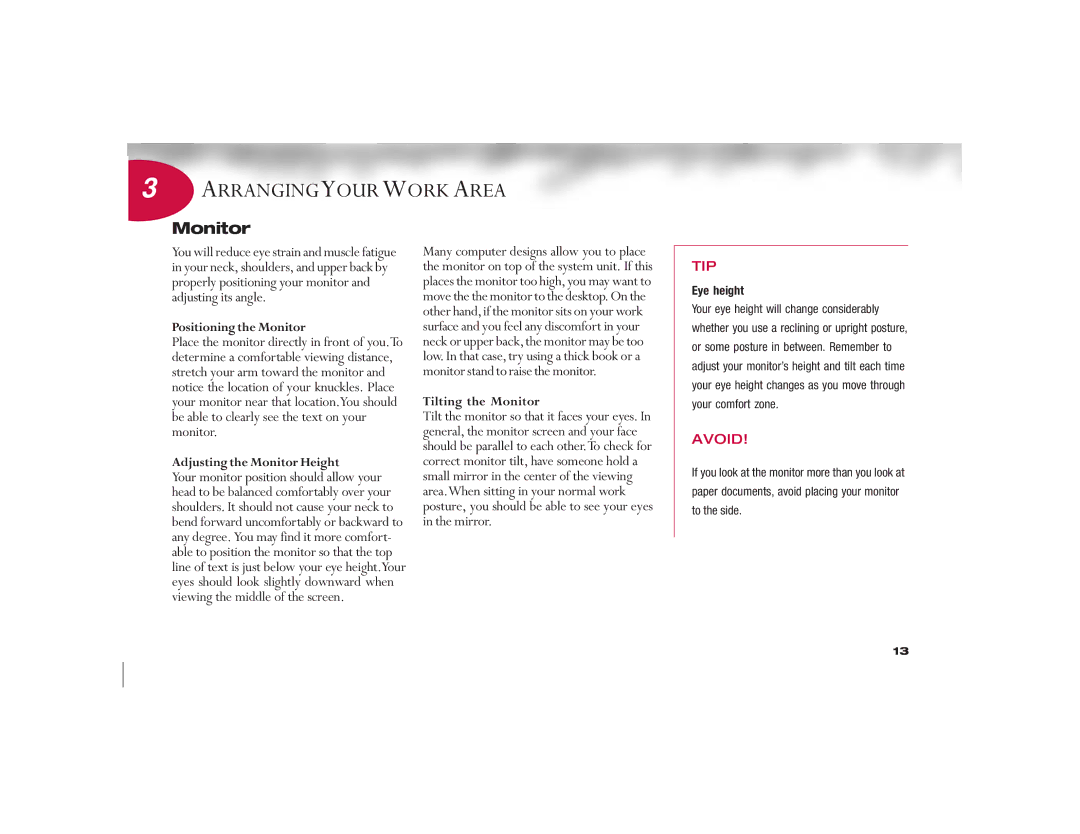
3ARRANGINGYOUR WORK AREA
Monitor
You will reduce eye strain and muscle fatigue in your neck, shoulders, and upper back by properly positioning your monitor and adjusting its angle.
Positioning the Monitor
Place the monitor directly in front of you.To determine a comfortable viewing distance, stretch your arm toward the monitor and notice the location of your knuckles. Place your monitor near that location.You should be able to clearly see the text on your monitor.
Adjusting the Monitor Height
Your monitor position should allow your head to be balanced comfortably over your shoulders. It should not cause your neck to bend forward uncomfortably or backward to any degree. You may find it more comfort- able to position the monitor so that the top line of text is just below your eye height.Your eyes should look slightly downward when viewing the middle of the screen.
Many computer designs allow you to place the monitor on top of the system unit. If this places the monitor too high, you may want to move the the monitor to the desktop. On the other hand,if the monitor sits on your work surface and you feel any discomfort in your neck or upper back,the monitor may be too low. In that case, try using a thick book or a monitor stand to raise the monitor.
Tilting the Monitor
Tilt the monitor so that it faces your eyes. In general, the monitor screen and your face should be parallel to each other.To check for correct monitor tilt, have someone hold a small mirror in the center of the viewing area.When sitting in your normal work posture, you should be able to see your eyes in the mirror.
TIP
Eye height
Your eye height will change considerably whether you use a reclining or upright posture, or some posture in between. Remember to adjust your monitor’s height and tilt each time your eye height changes as you move through your comfort zone.
AVOID!
If you look at the monitor more than you look at paper documents, avoid placing your monitor to the side.
13
